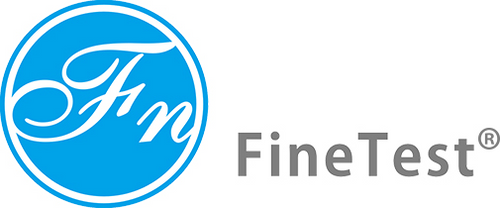Product Description
Recombinant Human Carcinoembryonic antigen-related cell adhesion molecule 1 (CEACAM1), partial is available at Gentaur for Next week Delivery.
Gene Name: CEACAM1
Alternative Names : Biliary glycoprotein 1
Expression Region : 35-428aa
AA Sequence : QLTTESMPFNVAEGKEVLLLVHNLPQQLFGYSWYKGERVDGNRQIVGYAIGTQQATPGPANSGRETIYPNASLLIQNVTQNDTGFYTLQVIKSDLVNEEATGQFHVYPELPKPSISSNNSNPVEDKDAVAFTCEPETQDTTYLWWINNQSLPVSPRLQLSNGNRTLTLLSVTRNDTGPYECEIQNPVSANRSDPVTLNVTYGPDTPTISPSDTYYRPGANLSLSCYAASNPPAQYSWLINGTFQQSTQELFIPNITVNNSGSYTCHANNSVTGCNRTTVKTIIVTELSPVVAKPQIKASKTTVTGDKDSVNLTCSTNDTGISIRWFFKNQSLPSSERMKLSQGNTTLSINPVKREDAGTYWCEVFNPISKNQSDPIMLNVNYNALPQENGLSPG
Sequence Info : Extracellular Domain
Tag Info : Tag-Free
Theoretical MW : 43.3 kDa
Storage Buffer : Tris/PBS-based buffer, 5%-50% glycerol. If the delivery form is lyophilized powder, the buffer before lyophilization is Tris/PBS-based buffer, 6% Trehalose, pH 8.0.
Endotoxin Level : Not tested-
Biological Activity : Not tested
Storage : Short term: -20°C; Long term: -80°C. Minimize freeze and thaw cycles.
Research Area : Tags & Cell Markers
Restriction : For Research Use Only. Not for use in diagnostic procedures, drug use, or for administration to humans or animals.
Relevance : Isoform 1: Cell adhesion protein that mediates homophilic cell adhesion in a calcium-independent manner. Plays a role as coinhibitory receptor in immune response, insulin action and functions also as an activator during angiogenesis. Its coinhibitory receptor function is phosphorylation- and PTPN6 -dependent, which in turn, suppress signal transduction of associated receptors by dephosphorylation of their downstream effectors. Plays a role in immune response, of T cells, natural killer (NK) and neutrophils. Upon TCR/CD3 complex stimulation, inhibits TCR-mediated cytotoxicity by blocking granule exocytosis by mediating homophilic binding to adjacent cells, allowing interaction with and phosphorylation by LCK and interaction with the TCR/CD3 complex which recruits PTPN6 resulting in dephosphorylation of CD247 and ZAP70. Also inhibits T cell proliferation and cytokine production through inhibition of JNK cascade and plays a crucial role in regulating autoimmunity and anti-tumor immunity by inhibiting T cell through its interaction with HAVCR2. Upon natural killer (NK) cells activation, inhibit KLRK1-mediated cytolysis of CEACAM1-bearing tumor cells by trans-homophilic interactions with CEACAM1 on the target cell and lead to cis-interaction between CEACAM1 and KLRK1, allowing PTPN6 recruitment and then VAV1 dephosphorylation. Upon neutrophils activation negatively regulates IL1B production by recruiting PTPN6 to a SYK-TLR4-CEACAM1 complex, that dephosphorylates SYK, reducing the production of reactive oxygen species (ROS) and lysosome disruption, which in turn, reduces the activity of the inflammasome. Downregulates neutrophil production by acting as a coinhibitory receptor for CSF3R by downregulating the CSF3R-STAT3 pathway through recruitment of PTPN6 that dephosphorylates CSF3R. Also regulates insulin action by promoting INS clearance and regulating lipogenesis in liver through regulating insulin signaling. Upon INS stimulation, undergoes phosphorylation by INSR leading to INS clearance by increasing receptor-mediated insulin endocytosis. This inernalization promotes interaction with FASN leading to receptor-mediated insulin degradation and to reduction of FASN activity leading to negative regulation of fatty acid synthesis. INSR-mediated phosphorylation also provokes a down-regulation of cell proliferation through SHC1 interaction resulting in decrease coupling of SHC1 to the MAPK3/ERK1-MAPK1/ERK2 and phosphatidylinositol 3-kinase pathways. Functions as activator in angiogenesis by promoting blood vessel remodeling through endothelial cell differentiation and migration and in arteriogenesis by increasing the number of collateral arteries and collateral vessel calibers after ischemia. Also regulates vascular permeability through the VEGFR2 signaling pathway resulting in control of nitric oxide production. Downregulates cell growth in response to EGF through its interaction with SHC1 that mediates interaction with EGFR resulting in decrease coupling of SHC1 to the MAPK3/ERK1-MAPK1/ERK2 pathway. Negatively regulates platelet aggregation by decreasing platelet adhesion on type I collagen through the GPVI-FcRgamma complex. Inhibits cell migration and cell scattering through interaction with FLNA; interfers with the interaction of FLNA with RALA. Mediates bile acid transport activity in a phosphorylation dependent manner. Negatively regulates osteoclastogenesis.Isoform 8: Cell adhesion protein that mediates homophilic cell adhesion in a calcium-independent manner. Promotes populations of T cells regulating IgA production and secretion associated with control of the commensal microbiota and resistance to enteropathogens
Function : Isoform 1
Involvement in disease :
Subcellular location : Isoform 1: Cell membrane, Single-pass type I membrane protein, Lateral cell membrane, Apical cell membrane, Basal cell membrane, Cell junction, Cell junction, adherens junction, Note=Canalicular domain of hepatocyte plasma membranes, Found as a mixture of monomer, dimer and oligomer in the plasma membrane, Occurs predominantly as cis-dimers and/or small cis-oligomers in the cell junction regions, Found as dimer in the solution, Predominantly localized to the lateral cell membranes, SUBCELLULAR LOCATION: Isoform 2: Secreted, SUBCELLULAR LOCATION: Isoform 3: Secreted, SUBCELLULAR LOCATION: Isoform 4: Secreted, SUBCELLULAR LOCATION: Isoform 5: Cell membrane, Single-pass type I membrane protein, SUBCELLULAR LOCATION: Isoform 6: Cell membrane, Single-pass type I membrane protein, SUBCELLULAR LOCATION: Isoform 7: Cell membrane, Single-pass type I membrane protein, SUBCELLULAR LOCATION: Isoform 8: Cell membrane, Single-pass type I membrane protein, Cytoplasmic vesicle, secretory vesicle membrane, Lateral cell membrane, Apical cell membrane, Basal cell membrane, Cell junction, Cell junction, adherens junction, Note=Predominantly localized to the lateral cell membranes, Found as a mixture of monomer, dimer and oligomer in the plasma membrane, Occurs predominantly as cis-dimers and/or small cis-oligomers in the cell junction regions (By similarity), Co-localizes with ANXA2 in secretory vesicles and with S100A10/p11 at the plasma membrane (PubMed:14522961), SUBCELLULAR LOCATION: Cell projection, microvillus membrane, Single-pass type I membrane protein, Apical cell membrane, Single-pass type I membrane protein
Protein Families : Immunoglobulin superfamily, CEA family
Tissue Specificity : The predominant forms expressed by T cells are those containing a long cytoplasmic domain (PubMed:18424730). Expressed in granulocytes and lymphocytes. Leukocytes only express isoforms 6 and isoform 1 (PubMed:11994468).
Paythway :
Uniprot ID : P13688
 Euro
Euro
 British Pound
British Pound
 US Dollar
US Dollar








